Towards a FoCal for the ALICE experiment

A new forward high-resolution calorimeter, called FoCal (Forward Calorimeter) is being planned [1,2] as one of the two upgrade projects for the ALICE experiment that are aiming for installation during the LS3 (2026-2028) for physics data taking in LHC Run-4 (2029-2032). The letter of Intent of FoCal [3] has been submitted to the LHCC and the FoCal project has been endorsed in June 2020 towards the final R&D process for the Technical Design Report (TDR).
The FoCal is a highly granular silicon-tungsten electromagnetic calorimeter combined with a conventional sampling hadronic calorimeter covering pseudo-rapidities of 3.2 < η < 5.8 (Figure 1). It provides unique capabilities at LHC to probe small-x gluon distributions via prompt photon production. FoCal significantly enhances the scope of existing ALICE physics programs by providing measurements of inclusive production cross sections and correlations of neutral mesons, prompt photons, and jets at high rapidities, to explore the unknown dynamics of the quarks and gluons inside a nucleus at small momentum fraction x down to 10-6 for the first time. It is also expected to elucidate the existence of the Color Glass Condensate (CGC) [4,5], which describes the dynamics of very densely populated gluon states at very small momentum fraction x in the nucleus, and is expected to be important for the early stages of the formation of the Quark-Gluon Plasma in heavy-ion collisions.
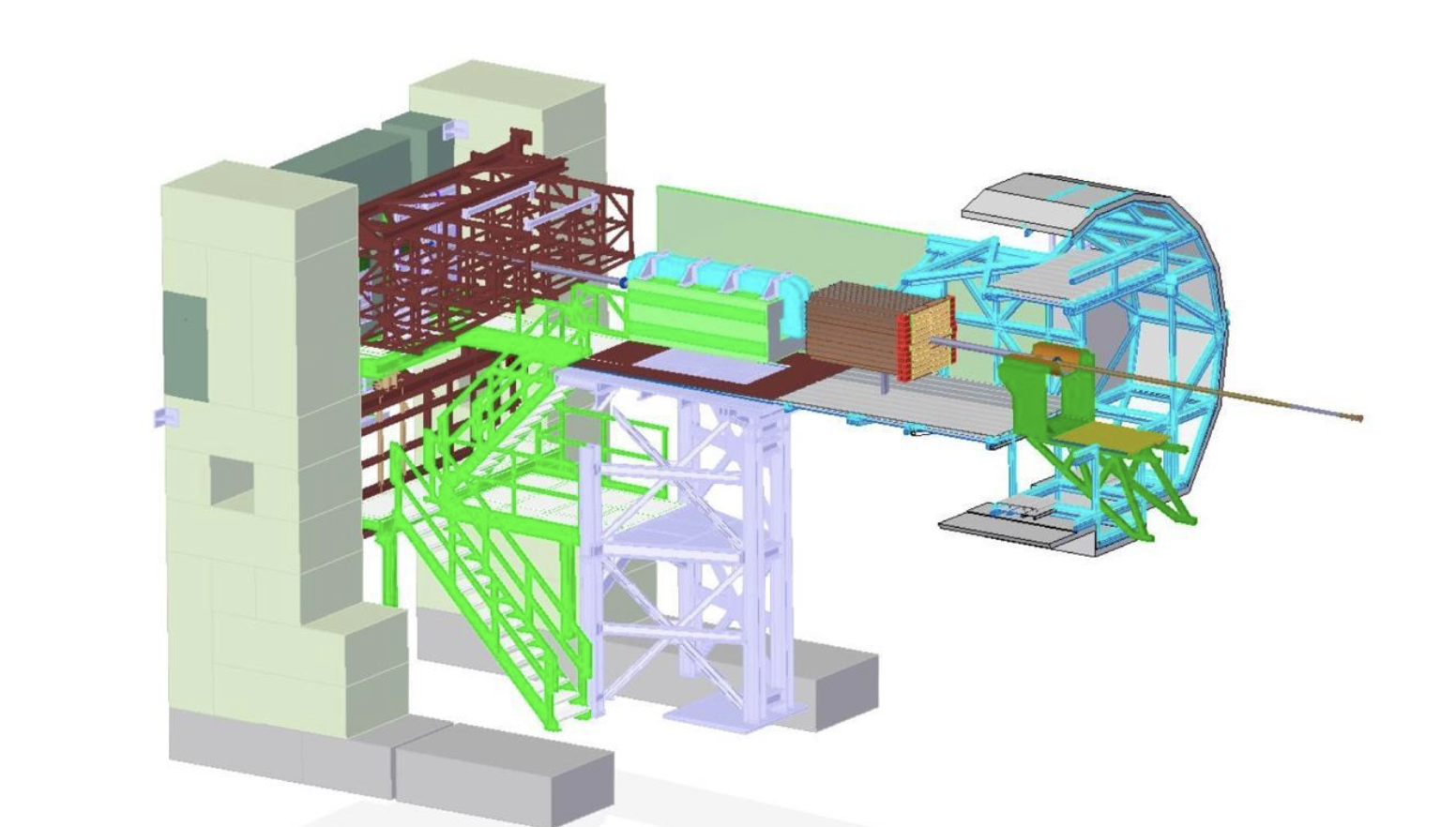
Figure 1: FoCal detector layout in the ALICE exerimental area.
The FoCal will be located outside the ALICE solenoid magnet at a distance of 7 m from the ALICE interaction point. The FoCal electromagnetic calorimeter (FoCal-E) is a compact silicon-tungsten sampling electromagnetic calorimeter with longitudinal segmentation. The current design consists of 18 layers of tungsten and silicon pads (FoCal-E PAD) with a granularity of 1 cm2 and two layers of tungsten and silicon pixels (FoCal-E PIXEL) with high granularity (30 x 30 μm2) (Figure 2). The pad layers provide the measurement of the shower energy and profile, while the pixel layers enable two-photon separation down to a few mm, to discriminate between isolated photons and merged showers of decay photon pairs from neutral pions. The total silicon sensor area for FoCal-E is about 12 m2 with about 150K individual pad channels and about 8 K pixel sensors.
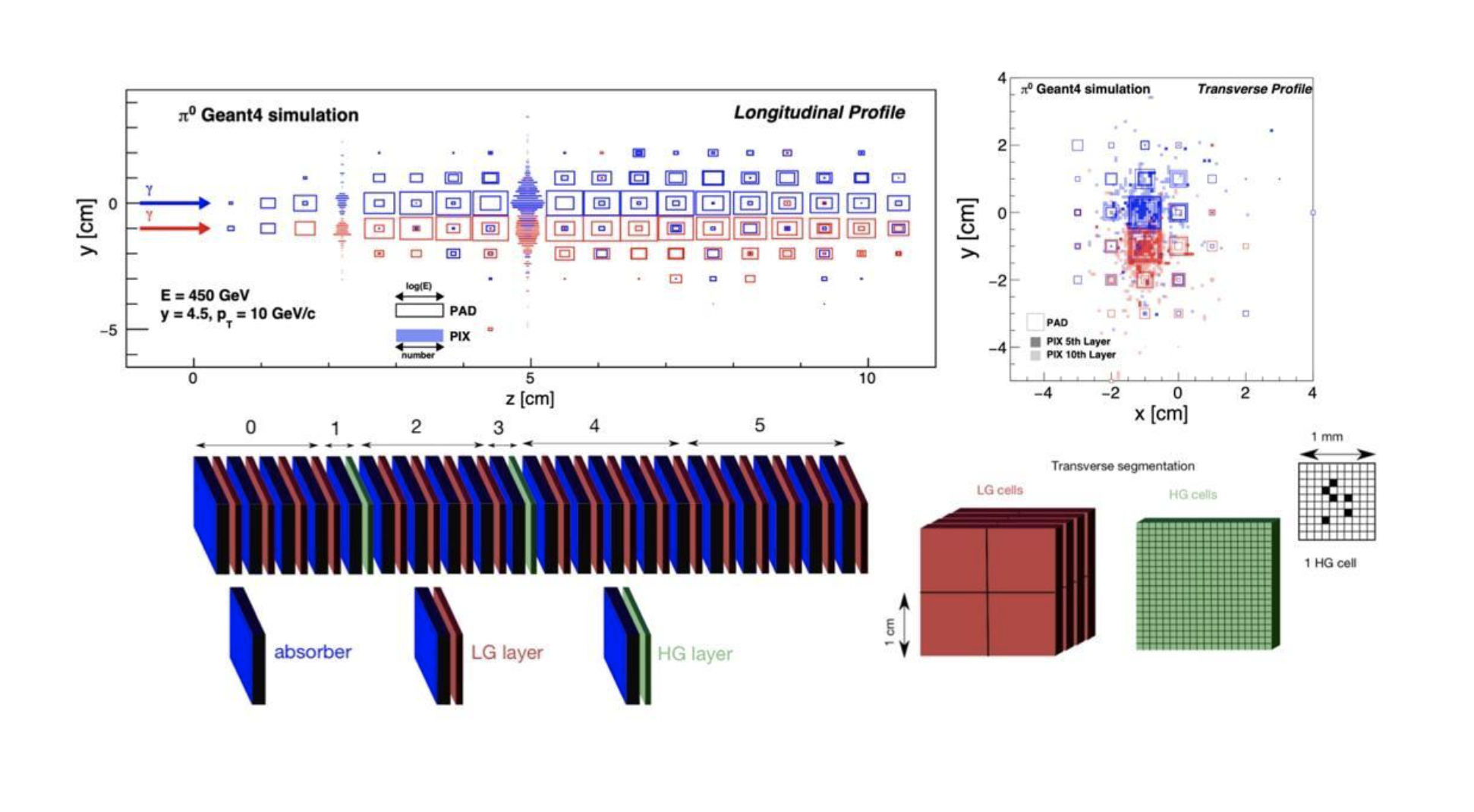
Figure 2: Monte Carlo simulation for FoCal-E pad response for 2γ at 450 GeV for the longitudinal (top left) and the transverse (top right) directions. A schematic view of FoCal-E design (bottom).
The FoCal hadron calorimeter (FoCal-H) is a Cu-scintillating fiber spaghetti calorimeter with high granularity of about 2 x 2 cm2, which provides good hadronic energy resolution and compensation. The FoCal-H contributes to the measurement of photon isolation energy, to improve the selection of prompt photons, and to jet measurements. The FoCal-H will be approximately 90 x 90 x 110 cm3.
In September 2021, a prototype of three FoCal subsystems, namely FoCal-E PAD, PIXEL and FoCal-H, were built and tested at the SPS beam line. The FoCal-E PAD prototype was built based on a p-type silicon sensor with 320 μm thickness, 8 x 9 pad segmentation with 1cm2 pad size (Figure 3). The readout system is based on the HGCROC [6] ASIC, to provide a large dynamic rage from a minimum ionizing particle for calibration to TeV photons with a high precision. During this test beam, one pad layer with a HGCROC has been tested and successfully read out.
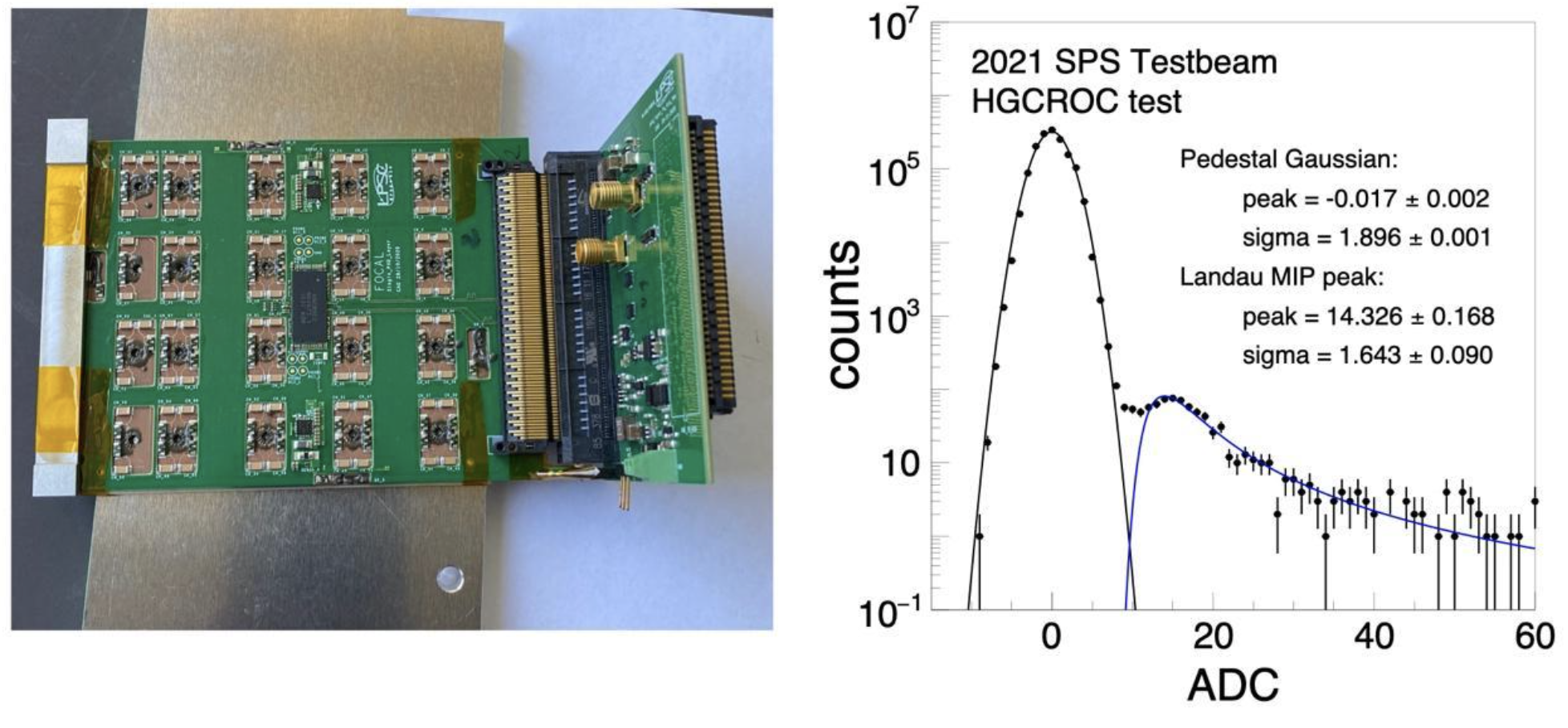
Figure 3: A prototype of FoCal-E PAD layer with HGCROC (left) and the response of minimum ionizing particle of FoCal-E PAD tested in 2021 SPS test beam.
The PIXEL subsystem uses the silicon pixel sensor ALPIDE [7], which has been used for the ITS2 upgrade in ALICE for Run-3. It realizes a position resolution of an electromagnetic shower better than 1 mm, which is required to identify decay photons at high energy. Two PIXEL layers were tested with the final read out system. The system performed as expected (Figure 4).
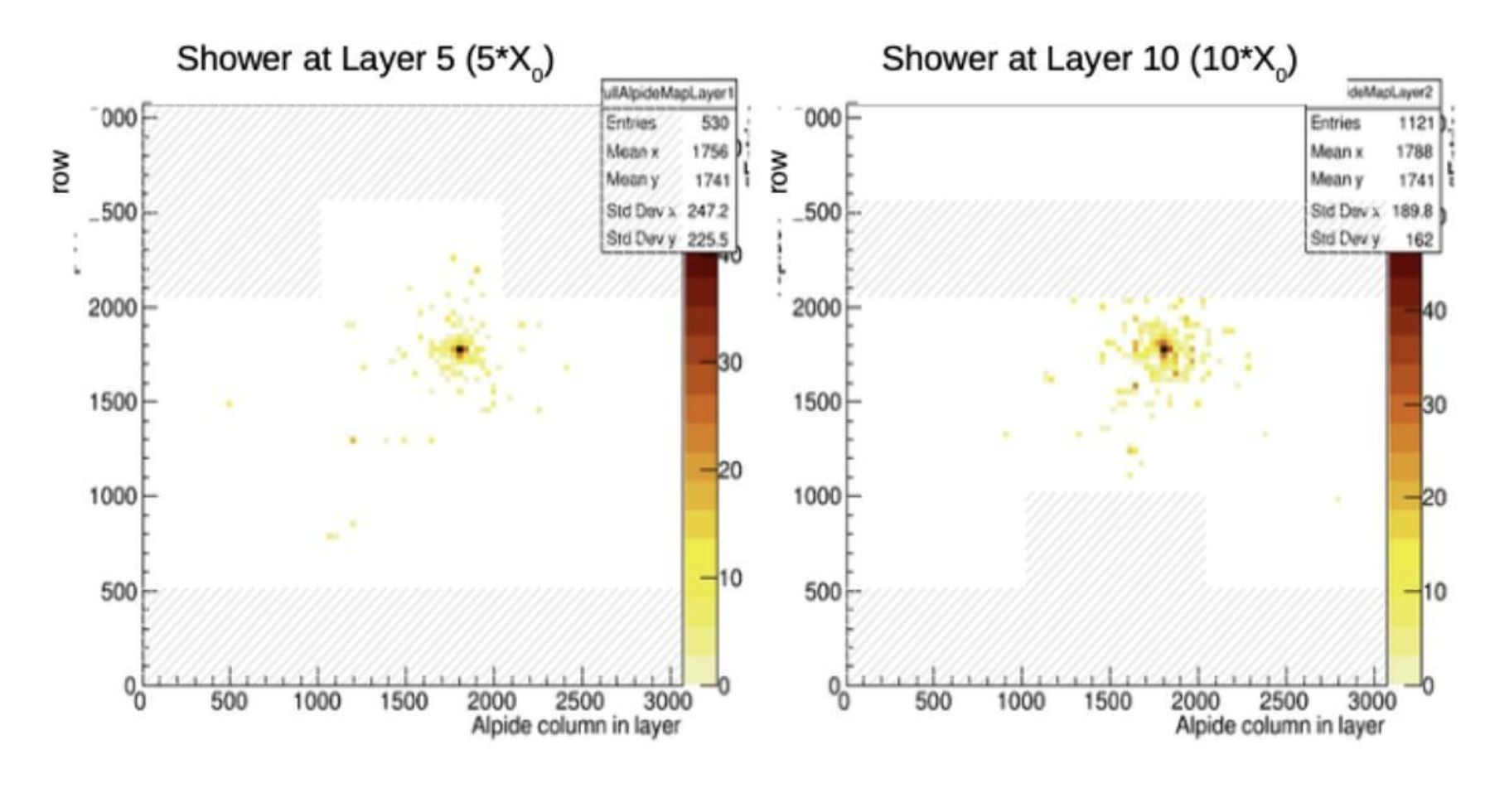
Figure 4: Shower profiles in FoCal-E PIXEL layers with 5 (left) and 10 layers of tungsten plates in front (right) measured in 2021 in the SPS test beam.
For FoCal-H, Cu capillary tubes with scintillation fibers, with 10 cm x 10 cm cross section and 55 cm length were built and tested (Figure 5). Cu tubes with outer (inner) diameter of 2.5 (1.2) mm with scintillating fiber (1mm diameter) are used for this test. Silicon Photomultipliers (SiPMs) were used and read out with two commercial CAEN boards of 32 channels each. The results confirm the basic choice of the mechanical design.
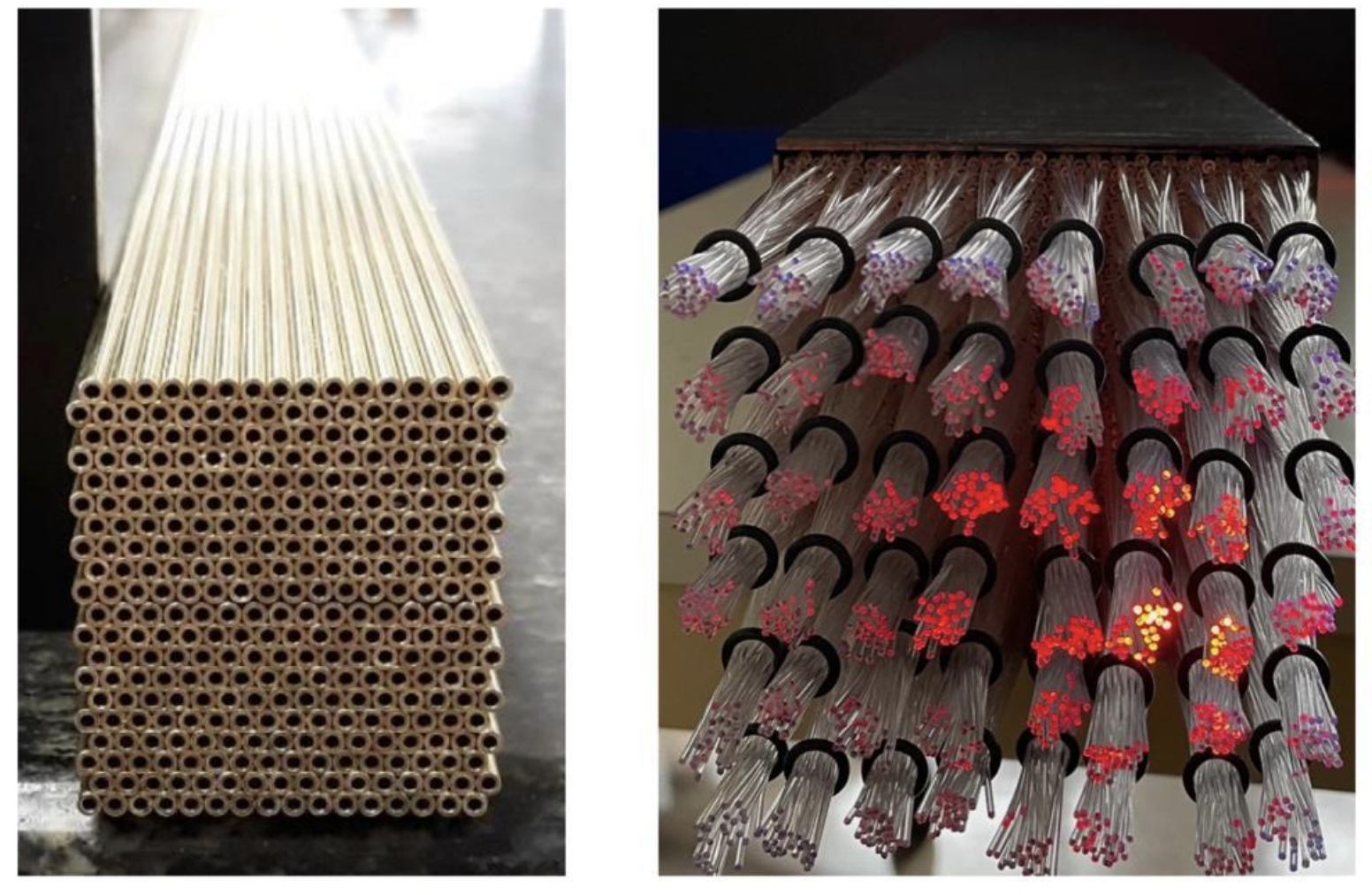
Figure 5: Cu capillary-tubes (left) and scintillation fiber bandles (right) for the FoCal-H prototype used in 2021 SPS test beam.
In 2022, the FoCal project is gearing up towards the full demonstration of the FoCal system. It includes the construction of 18 pad layers with HGCROC readout, data aggregation and triggering by a dedicated aggregator board, 2 pixel layers, an improved design of FoCal-H, and a common readout chain for FoCal-E using the Common Readout Unit (CRU) in ALICE and Online-Offline data taking scheme (O2). The FoCal prototype will be tested in the 2022 fall test beam at SPS, and provide the necessary studies towards the TDR.
In conclusion, after the endorsement of FoCal LoI by LHCC in 2020, the ALICE FoCal collaboration successfully built prototypes for all subsystems which were tested in 2021. A full system test is planned in 2022. Based on the test results, the TDR will be prepared for the final review of the detector construction and integration into the ALICE. The ALICE FoCal will bring us unique physics capabilities at an unexplored forward region at LHC, and will shed light on the nuclear structure at small-x and the production mechanism of the quark-gluon plasma.
References - Further Reading
[1] Letter of Intent for an ALICE ITS Upgrade in LS3 (ALICE Collaboration), CERN-LHCC-2019-018 ; LHCC-I-034, https://cds.cern.ch/record/2703140
[2] Magnus Mager, ALICE ITS3 clears major milestone, EP News Letter, Dec 2021, https://ep-news.web.cern.ch/content/alice-its3-clears-major-milestone
[3] Letter of Intent: A Forward Calorimeter (FoCal) in the ALICE experiment (ALICE Collaboration), CERN-LHCC-2020-009 ; LHCC-I-036, https://cds.cern.ch/record/2719928
[4] L. D. McLerran and R. Venugopalan, “Gluon distribution functions for very large nuclei at small transverse momentum”, Phys. Rev. D49 (1994) 3352–3355
[5] F. Gelis, “Color Glass Condensate and Glasma”, Int. J. Mod. Phys. A28 (2013) 133000
[6] The Phase-2 Upgrade of the CMS Endcap Calorimeter (CMS Collaboration), CERN-LHCC-2017-023 ; CMS-TDR-019, https://cds.cern.ch/record/2293646
[7] ALICE Collaboration, G. Aglieri Rinella, “The ALPIDE pixel sensor chip for the upgrade of the ALICE Inner Tracking System”, Nucl. Instrum. Meth. A845 (2017) 583–587.
